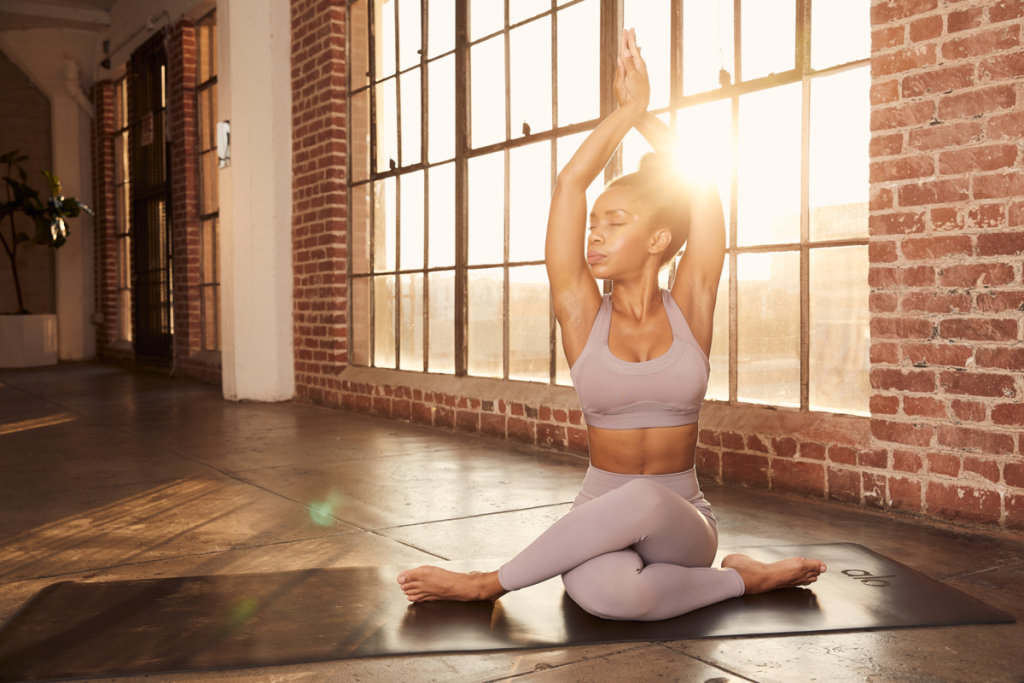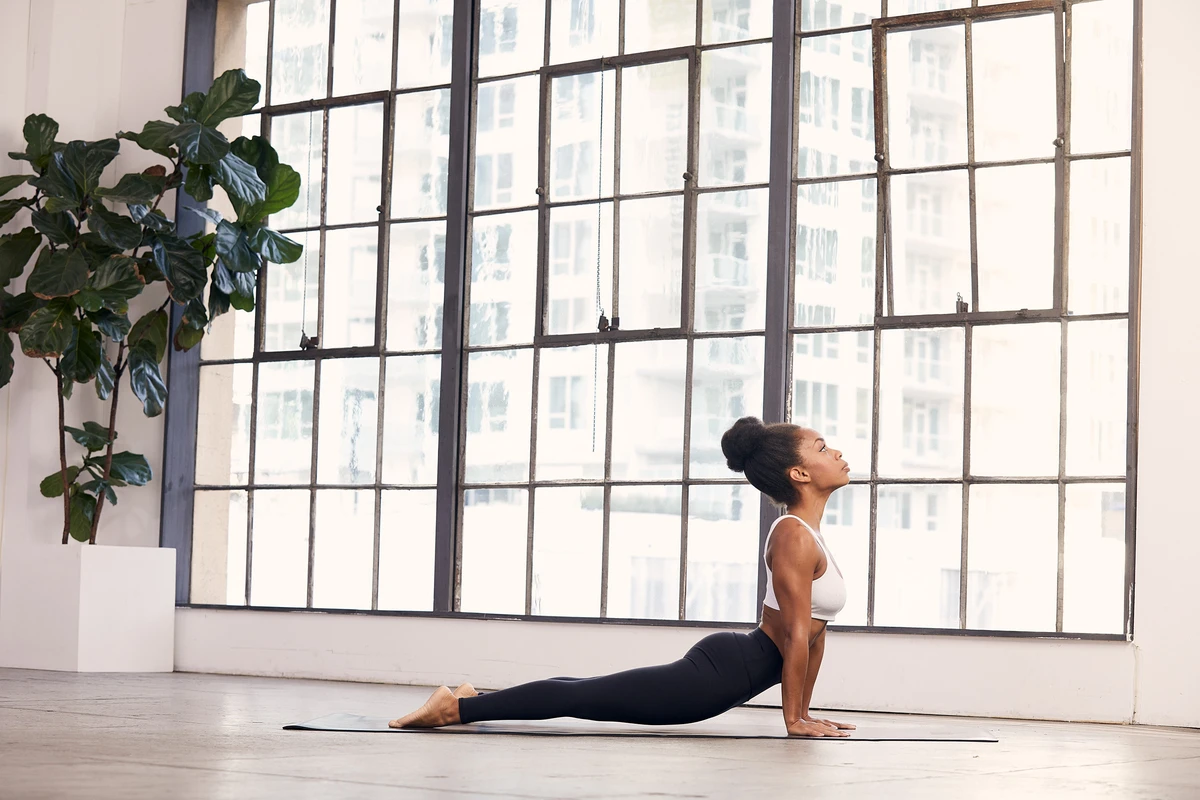Basics of Yoga Terms: Sanskrit Yoga Terms To Know

April 11, 2022

While you might practice yoga to improve your strength, balance and flexibility, it’s also a deeply spiritual practice with ancient history. The word yoga itself means to yoke, join or bind, and yoga is often thought of as a union of breath, body, mind and spirit, rather than just physical exercise.
Yet when it comes to feeling a sense of harmony and being fully present during your practice, one of the quickest things to derail your flow is hearing the next steps from your instructor and thinking, what on earth did they just say?!
But don’t worry, hearing words you don’t recognise during a yoga class is very common, as the language of yoga is Sanskrit - a classical ancient language of South Asia that is the root of many Indian languages.
Common yoga terms
We’ve compiled some of the most common yoga terms and Sanskrit words in alphabetical order to make it easier to begin your yoga practice, and easier to stay in your flow.
Asana
Pronounced “ah-sah-nah”, this word translates to ‘seat’ but in yoga this word simply refers to the physical postures or poses, such as downward-facing dog or child’s pose. In Sanskrit, the word for each yoga pose is followed by ‘asana’, for example, downward-facing dog is known as Adho Mukha Shvanasana.
Bandha
This refers to your internal muscles that support the lifting of different areas of your body when they are engaged. The three key bandhas are your pelvic floor muscles (Mula Bandha), your abdominal muscles up to your diaphragm (Uddiyana Bandha) and your throat (Jalandhara Bandha).
Bikram
Commonly known as “hot yoga”, Bikram is a style of yoga practiced in a heated room. Remember to have a towel and drink bottle at the ready!

Chakra
There are seven main chakras or energy centres in the body, located between the top of the head and the base of the spine. Chakra means ‘wheel’ and they are thought to be like spinning discs that need to stay open or in balance.
Each chakra is also associated with a different colour, area of the body, emotion and elements, and you may hear them in both English and Sanskrit. Here are the main seven chakras, from the head down:
Crown (Sahasrara): the very top of the head
Third eye (Ajna): forehead, in between the eyebrows
Throat (Vishuddha): throat area
Heart (Anahata): the centre of the chest
Solar plexus (Manipura): upper abdomen
Sacral (Svadhisthana): lower abdomen
Root (Muladhara): base of the spine
Chaturanga
Pronounced “cha-ter-unga”, this refers to a four-limbed staff pose or low plank. Begin in a high plank, then bend your elbows back, keeping them glued to your sides, as you lower yourself down until you are hovering above the ground. You’ll feel this move in your arms, shoulders and core! It is often part of a moving sequence of poses.
Downward-facing dog (Adho Mukha Svanasana)
One of the most commonly known yoga poses, this is where you make an inverted ‘V’ shape with your hands and feet on the mat and your hips high in the air. It’s a great pose for building flexibility and upper body strength, and you should feel a nice stretch in areas such as your arms, back and calves.
Drishti
Drishti means a focused gaze, and you might hear your yoga instructor use this word to remind you where to look. This can help with focus, balance, self-awareness and intent.
Hatha
Hatha is a style of yoga with a slower pace and allows you to focus on holding one pose at a time.

Heart centre
This phrase refers to the centre of your chest. Especially at the end of practice, it’s common to hear your instructor tell you to bring your hands together at your heart centre.
Mantra
Mantras aren’t always part of yoga, but they refer to a sound or a phrase that you repeat to increase your concentration and are commonly used for meditation and calming the mind. A mantra can either be spoken out loud or repeated in your mind.
Namaste
You’ll usually hear namaste being said by both the instructor and participants at the end of a yoga class, with hands pressed together in front of the heart centre and head bowed. This is a beautiful and respectful way to end a class and part ways with your instructor, as it means "I bow to you." Some people also consider it a way to say, “the divine in me acknowledges the divine in you.”
Om or Aum
This is a common mantra you may hear in your yoga class. It is often referred to as the original sound or vibration of the universe.
Prana
Pronounced “prah-nah”, this term is often defined as life energy, life force or spiritual energy that runs through the body.
Pranayama
With prana meaning “life energy” and yama meaning “to control”, pranayama is about controlling your breathing to allow your life energy to flow freely.
Sacrum
This is a triangle-shaped bone in your lower back.
Savasana
Pronounced “sha-vah-sah-nah”, this refers to Corpse pose where you lie on your body on your mat with your palms facing upwards by your sides. This pose typically happens at the end of your yoga flow or class and is a relaxing, restorative pose.
Shanti
Shanti means peace. You may hear this spoken as part of a mantra or chant during yoga.

Surya Namaskar or Sun salutations
This is a popular sequence of asanas or poses that warm up the body, with each pose often linked to inhalation or exhalation. You begin in a standing position, then flow through to a high plank, upward-facing dog, downward-facing dog, then return to plank and standing.
Ujjayi
Pronounced “ooh-jai-yee,” this refers to the type of breathing where you inhale and exhale through your nose.
Vinyasa
Vinyasa is a style of yoga where a flowing sequence of poses are linked with your breathing. For example, one movement might be linked to your inhalation, and the next is linked to your exhalation. Your instructor will usually tell you when to inhale or exhale.
Yoga Nidra
This is a style of guided relaxation or meditation also known as “yogic sleep”, often described as the relaxed but aware state between being awake and asleep. It is usually practiced lying down and your teacher will often guide you through breathing techniques, or what to focus on. This can be a great practice for those who struggle to relax, sleep or let go.
Yin yoga
Where vinyasa is a flow of connected poses, yin yoga is a style of yoga where you hold floor poses for longer periods of time to target your deep connective tissues and find relaxation.
Hopefully that’s made it easier to stay in your flow during your next yoga session! Are there any other yoga terms that have had you feeling a bit lost in the middle of class? Let us know in the comments!

A more empowered you starts with Sweat, and our editorial team is here to bring you the latest fitness tips, trainer recommendations, wellbeing news, nutritional advice, nourishing recipes and free workouts.
* Disclaimer: This blog post is not intended to replace the advice of a medical professional. The above information should not be used to diagnose, treat, or prevent any disease or medical condition. Please consult your doctor before making any changes to your diet, sleep methods, daily activity, or fitness routine. Sweat assumes no responsibility for any personal injury or damage sustained by any recommendations, opinions, or advice given in this article.
Fitness